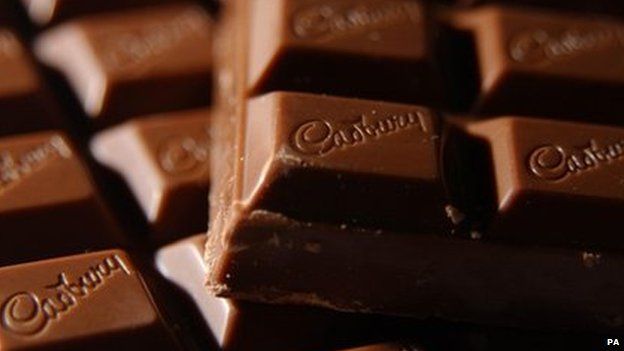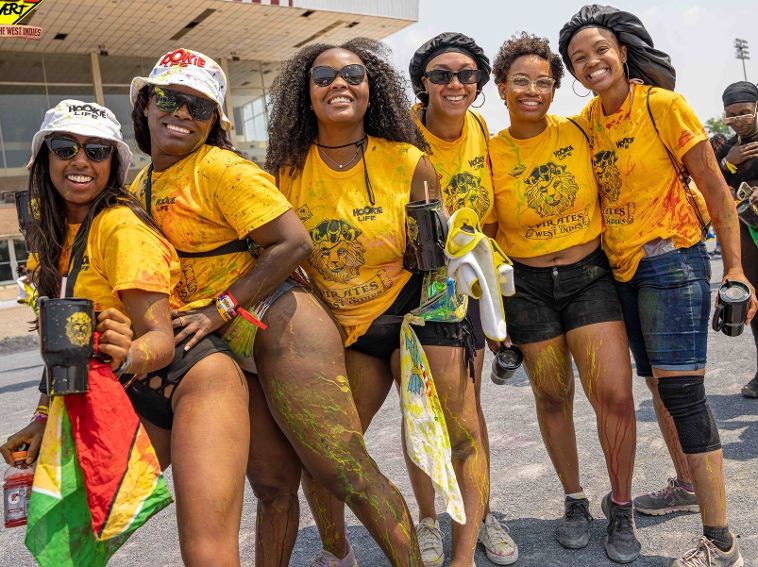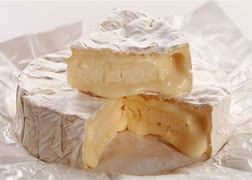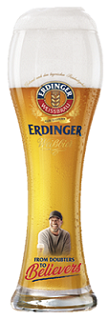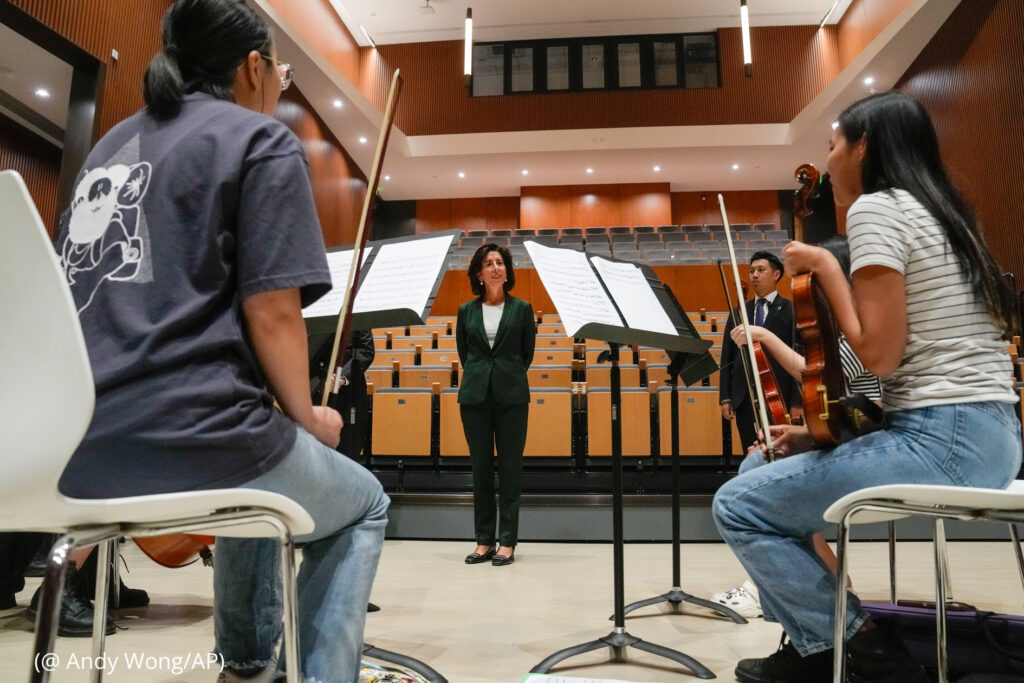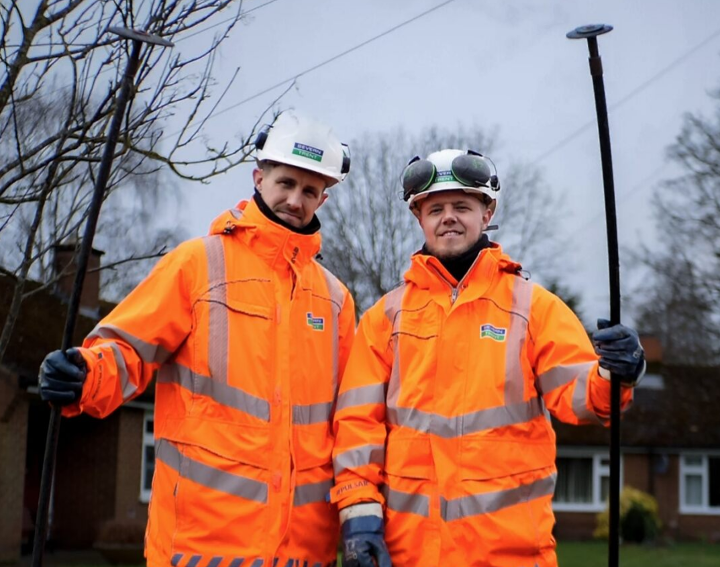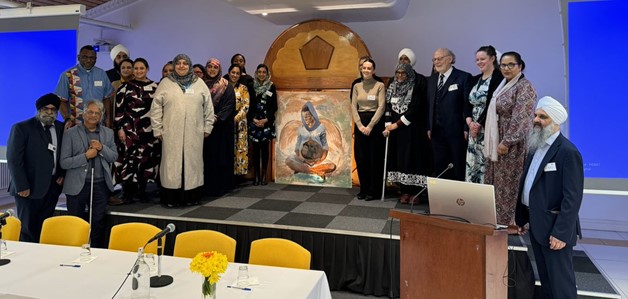Cadbury’s first shop was recreated using more than 600 bars of Dairy Milk to mark the company’s 200th anniversary.
In 1824, John Cadbury opened the first Cadbury shop at 93 Bull Street in Birmingham, complete with plate glass windows with mahogany frames, which he was said to have cleaned every day. This feature and a front door similar to the original have been replicated by chocolatiers Donna Oluban and Dawn Jenks from Cadbury World in Bournville, Birmingham.
They took five days to craft every element of the creation, which is 85cm tall and weighs 30kg – the equivalent of 667 standard Cadbury Dairy Milk bars. Other components include 43 individually wrapped miniature versions of the original Dairy Milk bars in the shop window, with white and milk chocolate used to piece together the creamy creation.
John Cadbury opened his first grocery shop in Birmingham city centre, on March 4 - opening his doors on Bull Street in the city centre. His first outlet was next door to a drapery run by his brother Richard Tapper Cadbury.
From humble beginnings, the family went on to become the world's biggest chocolate makers.
At the time, chocolate was only consumed as a beverage, which John began making with a pestle and mortar. The drink was a hit with upwardly mobile Georgians, who saw it as a mark of status.
The Cadbury business grew, with John opening a warehouse in 1831 and ramping up manufacturing with a new factory in 1847. But it would be his sons Richard and George who'd make the Cadbury name famous around the world.
The Cadbury brothers, who were strict Quakers, wanted a different kind of industrial site, one where workers could live healthily alongside the factory. A pioneering mayor, Joseph Chamberlain removing swathes of slums to build the Parisian-inspired boulevard Corporation Street, the Council House, and Museum and Art Gallery.
But the brothers looked beyond the city centre to bring their vision to life, bringing 14.5 acres of land four miles south in what was then Worcestershire. The Bourn brook ran through it, with the Worcester Canal and a railway alongside.
They named the area Bournville, giving it a French-sounding name as a "marketing ploy", because French chocolate had the best reputation at the time. The newly-built Bournville factory would then become the biggest cocoa manufacturer in the world, employing up to 15,000 people at its height.
The garden village that surrounded it was seen as an innovative new way of housing the working classes. However, in line with the Cadbury's Quaker ideals, there was no pub, and no alcohol is sold anywhere in Bournville to this day.
George Cadbury founded the Bournville Village Trust as a charitable organisation, making sure the area had places of worship, open spaces, sports facilities, community buildings and schools. The trust endures today, covering 1,000 acres and 8,000 homes, with the Bournville Village Festival still taking place every June.
Before American food giant Kraft's controversial hostile takeover in 2010, the chocolate maker had a history of taking over other confectionery businesses themselves. In 1919, they took over Fry's, another chocolate maker run by Quakers, based in Bristol and predating Cadbury - having created the first solid chocolate bar in 1847.
After the merger, production also began at a factory in Somerdale, just outside Bristol. In 1969, Cadbury bought another iconic British brand - drinks maker Schweppes.
The company was known as Cadbury Schweppes until 2008, when confectionery and drinks were split into two businesses, Dr Pepper Snapple Group and Cadbury plc. In 2007, Cadbury announced plans to close the Somerdale plant, and move production to Poland, with the loss of hundreds of jobs.
But by 2010 it would be Cadbury's turn to face a takeover of its own, with new owners Kraft initially pledging to keep the Bristol factory open before going back on its word by closing down production there a year later. Colin Pitt, education and heritage centre manager at Cadbury World, said: "We are always so impressed by the stunning creations our chocolatiers create here at Cadbury World, and with such an important milestone year for the brand, this one had to be extra special.
"We’re proud of the Cadbury story and guests of all ages really enjoy learning the heritage of the brand here at the attraction, so what better way to honour the 200 years of Cadbury than with a throwback to where it all began, the Bull Street shop." The creation will be on display to coincide with the reopening of the improved Bournville Experience.
Bournville remains the spiritual home of Cadbury. From humble beginnings, it remains Britain's best-selling chocolate brand.
The trust endures today, covering 1,000 acres and 8,000 homes, with the Bournville Village Festival still taking place every June. Colin Pitt, education and heritage centre manager at Cadbury World, said: "We are always so impressed by the stunning creations our chocolatiers create here at Cadbury World, and with such an important milestone year for the brand, this one had to be extra special.
"We’re proud of the Cadbury story and guests of all ages really enjoy learning the heritage of the brand here at the attraction, so what better way to honour the 200 years of Cadbury than with a throwback to where it all began, the Bull Street shop." The creation will be on display to coincide with the reopening of the improved Bournville Experience.
Cadbury’s still produces approximately 132,000 tonnes of chocolate per year in Bournville, and in 24 hours makes around 1.8 million blocks of chocolate.




